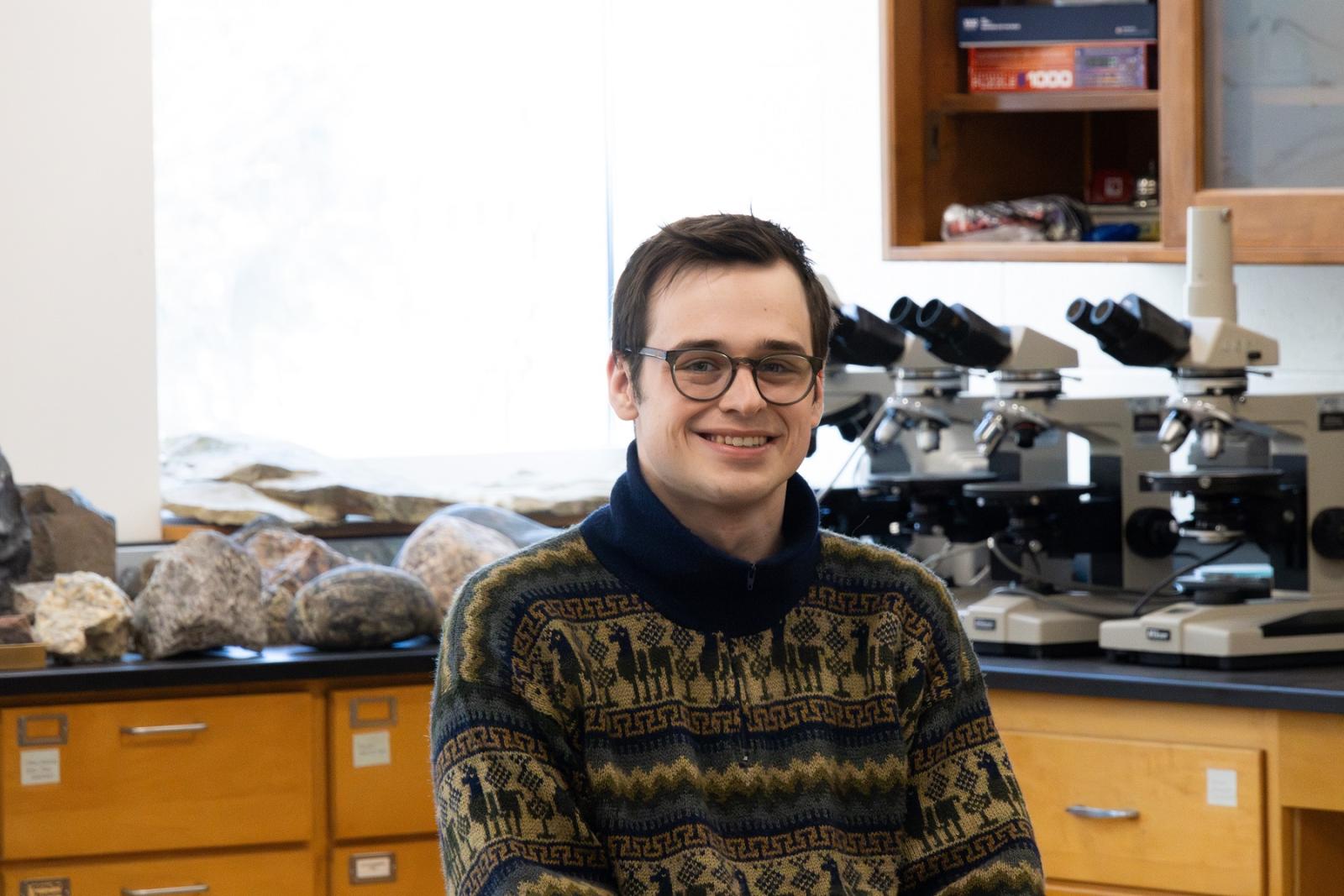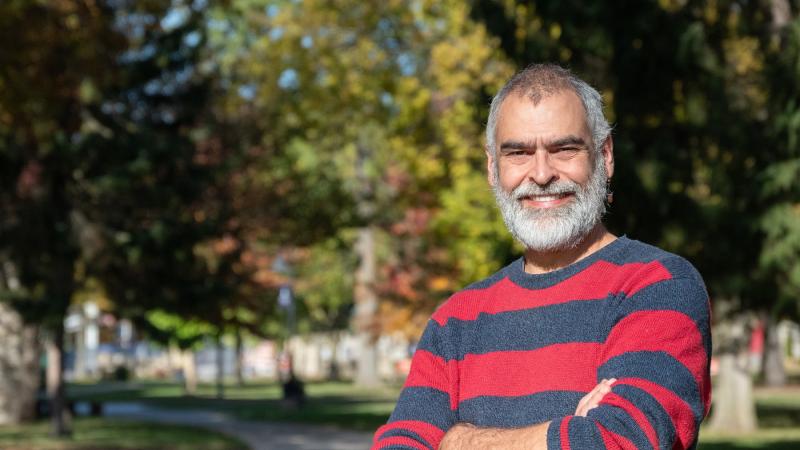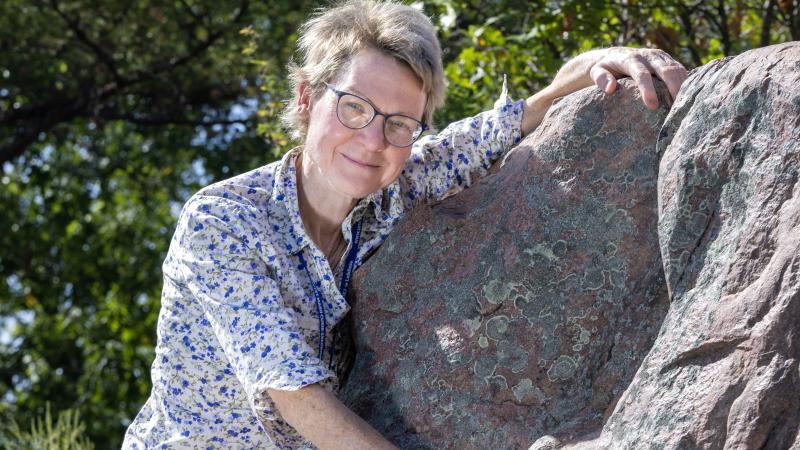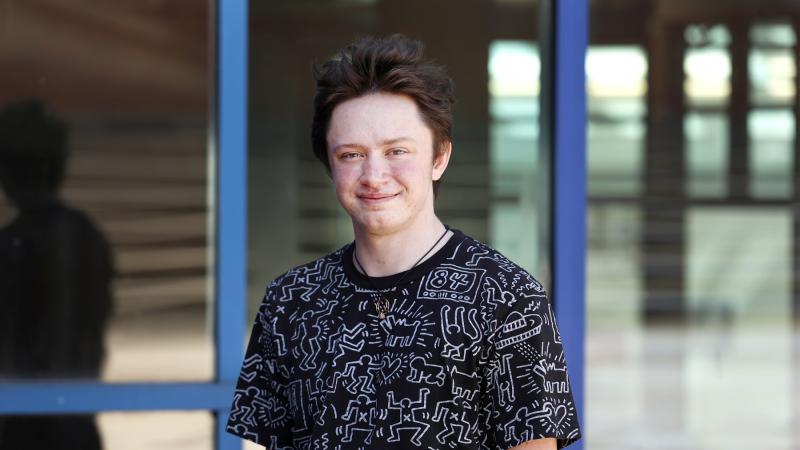Lawrence University junior Zachary Hogan has turned his fascination with Mars into research that has garnered a grant from the Wisconsin Space Grant Consortium (WSGC), an educational branch of NASA.
The geosciences major from Warrenville, Illinois, is using the $5,000 grant to fund research into the deterioration of ice cliffs on the poles of Mars. The end goal, Hogan said, is to determine an annual volume of material that’s shedding from the ice slopes, which could inform further research on the surface of Mars. In August, he’ll present his research to WSGC, and his write-up will be published in the WSGC’s student publication.
“The north pole of Mars has these really interesting spiral canyons we call spiral troughs—a spiral shape leading out from the north pole,” Hogan said. “We look at a ledge in 2005 and then in 2020 to see how much it’s collapsed. The idea is to understand the processes that are leading to this and what causes such a strange formation to exist.”
Hogan is one of two Lawrence students to receive a WSGC grant this year. Sydney Closson, a dual-degree student from Rolesville, North Carolina, majoring in geosciences and music, also received the award for her research project, “A comprehensive review of the rheology and geophysics of icy moons in the outer solar system.” This marks the second time Closson has participated in research funded by the WSGC; she also received an earlier WSGC scholarship.
Get to know Earth's past, present, and future with the multidisciplinary study of geosciences.
Hogan’s research is multifaceted. He needs to take into consideration the weather patterns on Mars. As the frozen formations deteriorate, dust is released from the ancient ice into the thin, carbon dioxide atmosphere.
“This ice has a lot of dust trapped in it,” he said. “It’s like a glacier, but it doesn’t flow. It’s been there for millions, potentially billions, of years. There are colored bands on the outside of the ice, and each one of these bands contains different types of dust. That dust is released, and it’s interacting with the surrounding environment and spreading across the surface of the planet.”
Hogan’s interest in this research began in high school when he saw images of the cliffs on Mars. The geosciences faculty at Lawrence gave him the opportunity to dig deeper into this interest. The research idea came together when he was participating in a project with Jeff Clark, professor of geosciences, tracking the progression of cliffs along Lake Michigan. He realized the drone imagery he and other students were taking of the cliffs resembled the images he had seen of the deterioration on Mars.
“I didn’t realize I would have the time or ability to work on something like this, but through different classes in the Geosciences Department, my interest in those questions grew,” Hogan said. “The approach to learning in the Geosciences Department is very commendable. We’re kind of all in it together, and you get to ask really interesting questions.”
Hogan said he’s gaining valuable skills via this research project, and he’ll take those into his next endeavors. After his time at Lawrence, Hogan plans to continue his education in space sciences with a postgraduate program, and then work toward earning a Ph.D.
“There’s a lot of skills I’ve gained from this in terms of structuring my research questions and planning, and thinking about how I use my funding,” he said.



